Search Results
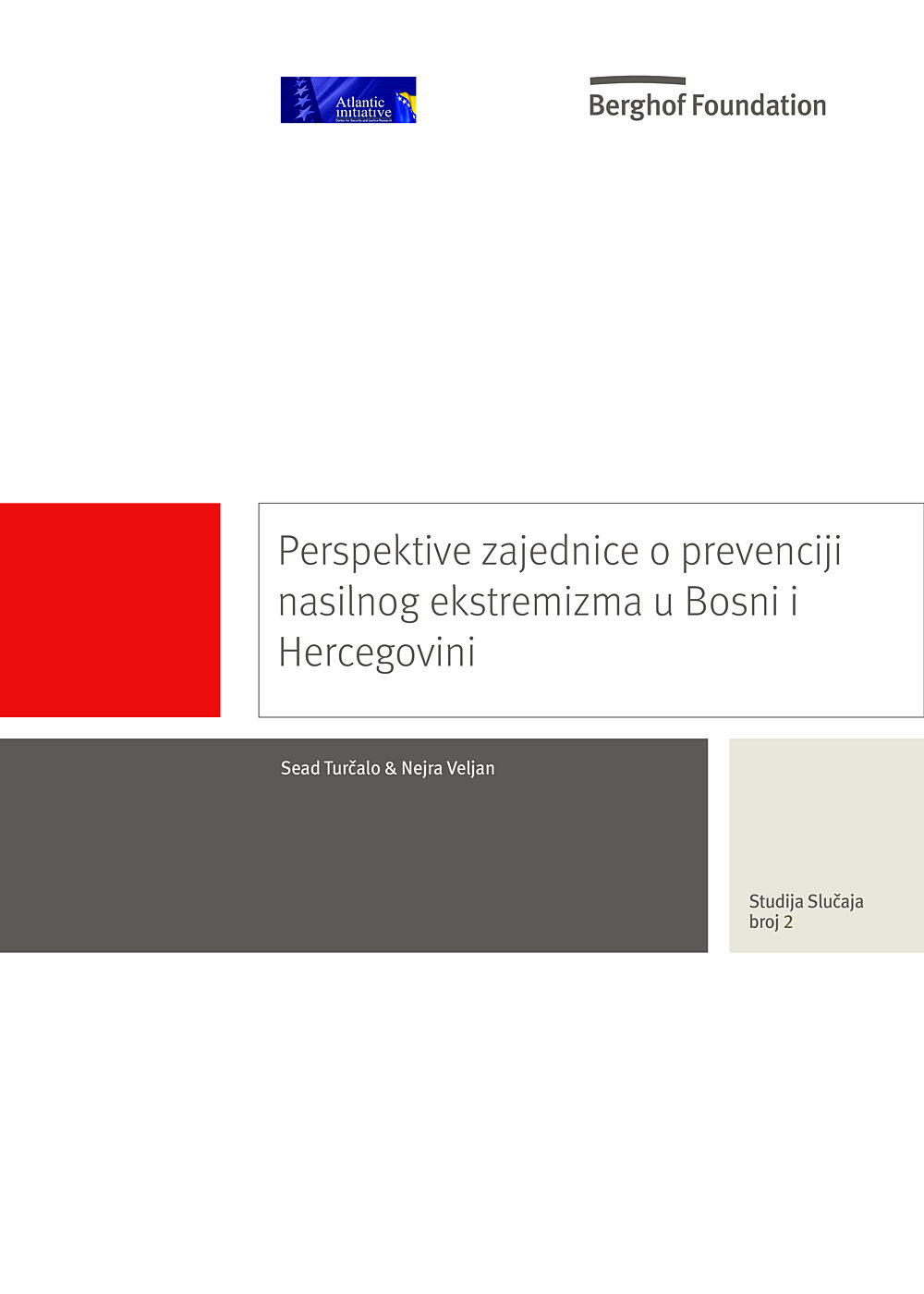
Perspektive zajednice o prevenciji nasilnog ekstremizma u Bosni i Hercegovini
Studija slučaja o Bosni i Hercegovini realizirana je zajedno sa tri izvještaja koja su obuhvaćala Albaniju, Kosovo i Makedoniju u okviru participativnog istraživačkog projekta »Mogućnosti sprečavanja nasilnog ekstremizma na zapadnom Balkanu«. Zajedno sa četiri istraživačka partnera istraživali smo zašto su neke zajednice pogođene pojedinim osobama koje su inspirisane da se pridruže Islamskoj državi ili sličnim nasilnim ekstremističkim skupinama, dok su ostale zajednice pokazale veću otpornost na isti fenomen. Na temelju rezultata istraživanja, projektni partneri će provoditi inicijativu lokalnog dijaloga i predloziti smjernce za razvijanje politika a sve u suradnji s lokalnim sluzbenicima i pogođenim zajednicama, kako bi istražili i razvili strategije za sprečavanje nasilne radikalizacije na zapadnom Balkanu.
- Year 2018
- Author(s) Sead Turčalo, Nejra Veljan
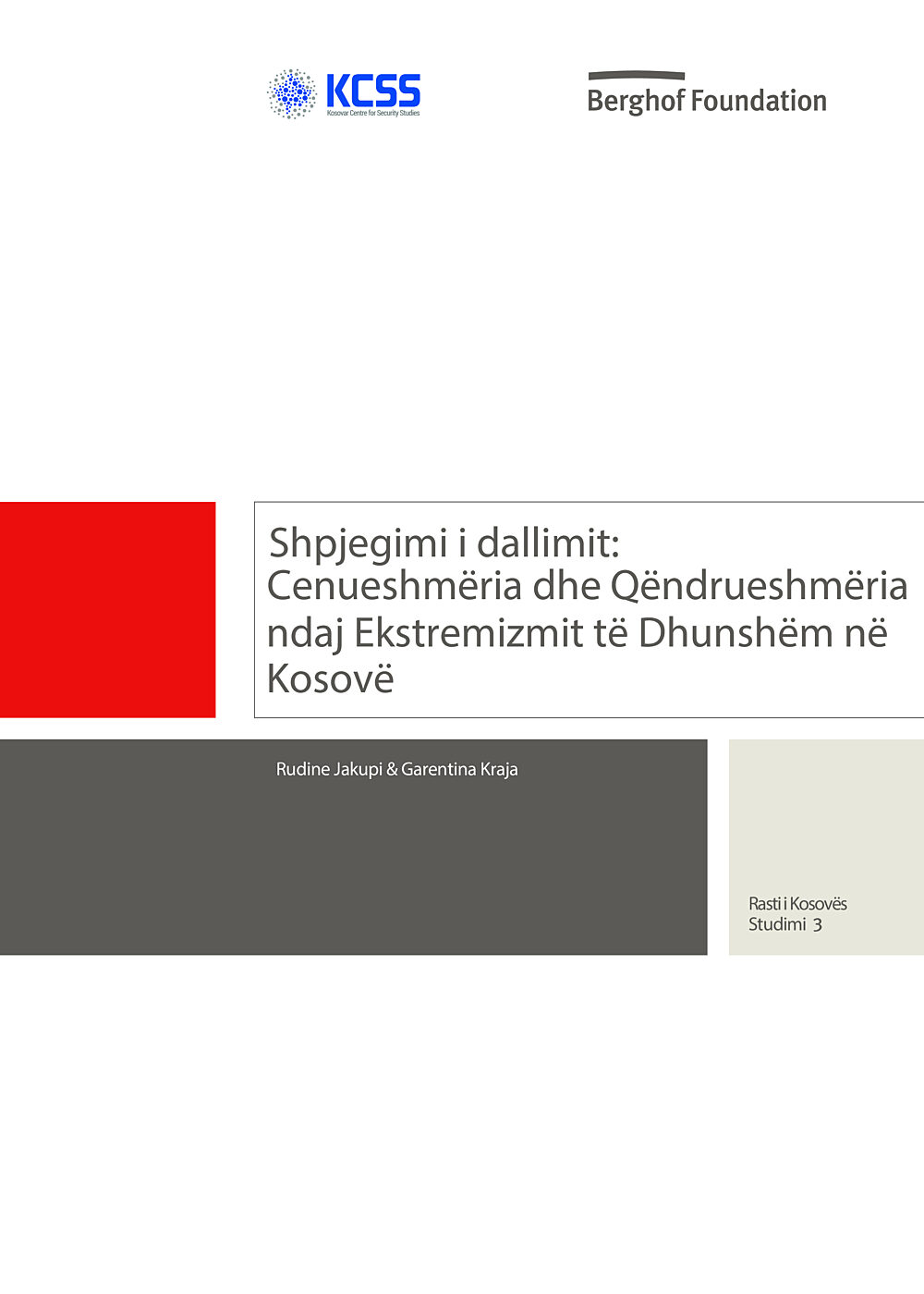
Shpjegimi i dallimitCenueshmëria dhe Qëndrueshmëria ndaj Ekstremizmit të Dhunshëm në Kosovë
Ky studim mbi ekstremizmin e dhunshëm në Kosovë është pjesë e iniciativës rajonale “Mundësitë për të Parandaluar Ekstremizmin e Dhunshëm në Ballkanin Perëndimor” që përfshinë Shqipërinë, Bosnje e Hercegovinën dhe Maqedoninë. Në këtë hulumtim, me ndihmën e partnerëve tonë vendor, Qendra Kosovare për Studime të Sigurisë ka hulumtuar dhe analizuar dallimet mes komuniteteve që janë prekur nga fenomeni i ekstremizmit të dhunshëm dhe atyre që i kanë bërë ballë atij.
Gjetjet e këtyre studimeve do të shërbejnë si bazë për të avokuar dhe për të ndërmarrë nisma për dialog në niveli komuniteti në bashkëpunim me akterët e ndryshëm lokal për të zhvilluar dhe hartuar strategji efektive për parandalimin e radikalizmit dhe ekstremizmit të dhunshëm në Ballkanin Perëndimor.
- Year 2018
- Author(s) Rudine Jakupi, Garentina Kraja
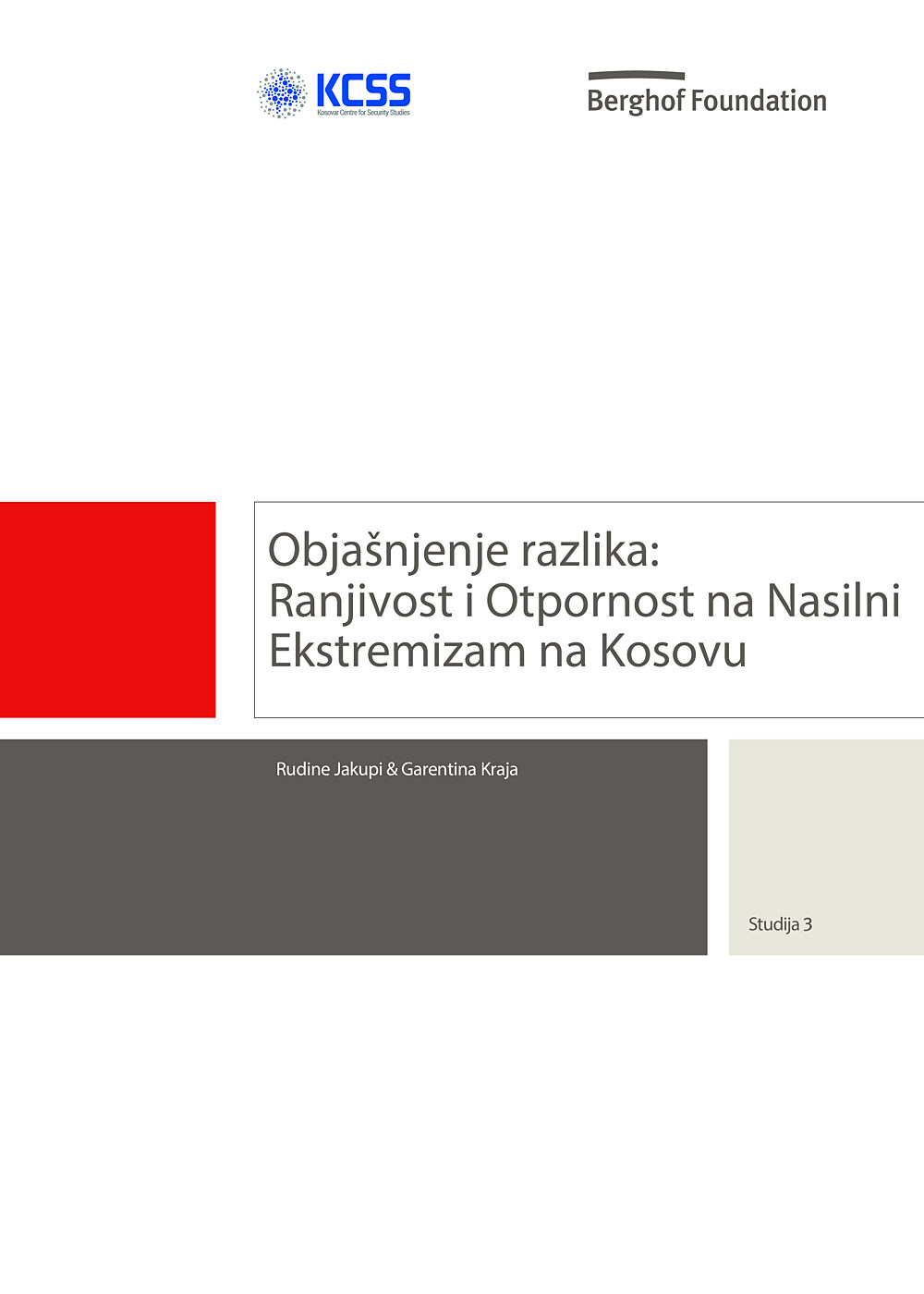
Objašnjenje razlikaRanjivost i Otpornost na Nasilni Ekstremizam na Kosovu
Ova studija o državi Kosovo je izrađena, pored tri ostalih koji pokrivaju Albaniju, Bosnu i Hercegovinu i Makedoniju, u okviru projekta participativnog izveštaja za “Mogućnosti za Sprečavanje Nasilnog Ekstremizma na Zapadnom Balkanu”. Zajedno sa četiri lokalna partnera istraživanja, istražili smo zašto su neke zajednice posebno pod uticajem pojedinaca inspirisanih od i/ili su se udružili Islamskoj Državi (ID) ili ostalim slićnim nasilnim ekstremnim grupama, dok ostale zajednice pokazuju veću otpornost na iste pojave. Na osnovu nalaza istraživanja, partneri projekta će sprovesti političko usmeravanje i iniciative lokalnog dialoga, u saradnji sa lokalnim sudionicima i zajednicama pod uticajem, da bi istražili i razvili strategije za sprečavanje nasilnog radikalizma na Zapadnom Balkanu.
- Year 2018
- Author(s) Rudine Jakupi, Garentina Kraja
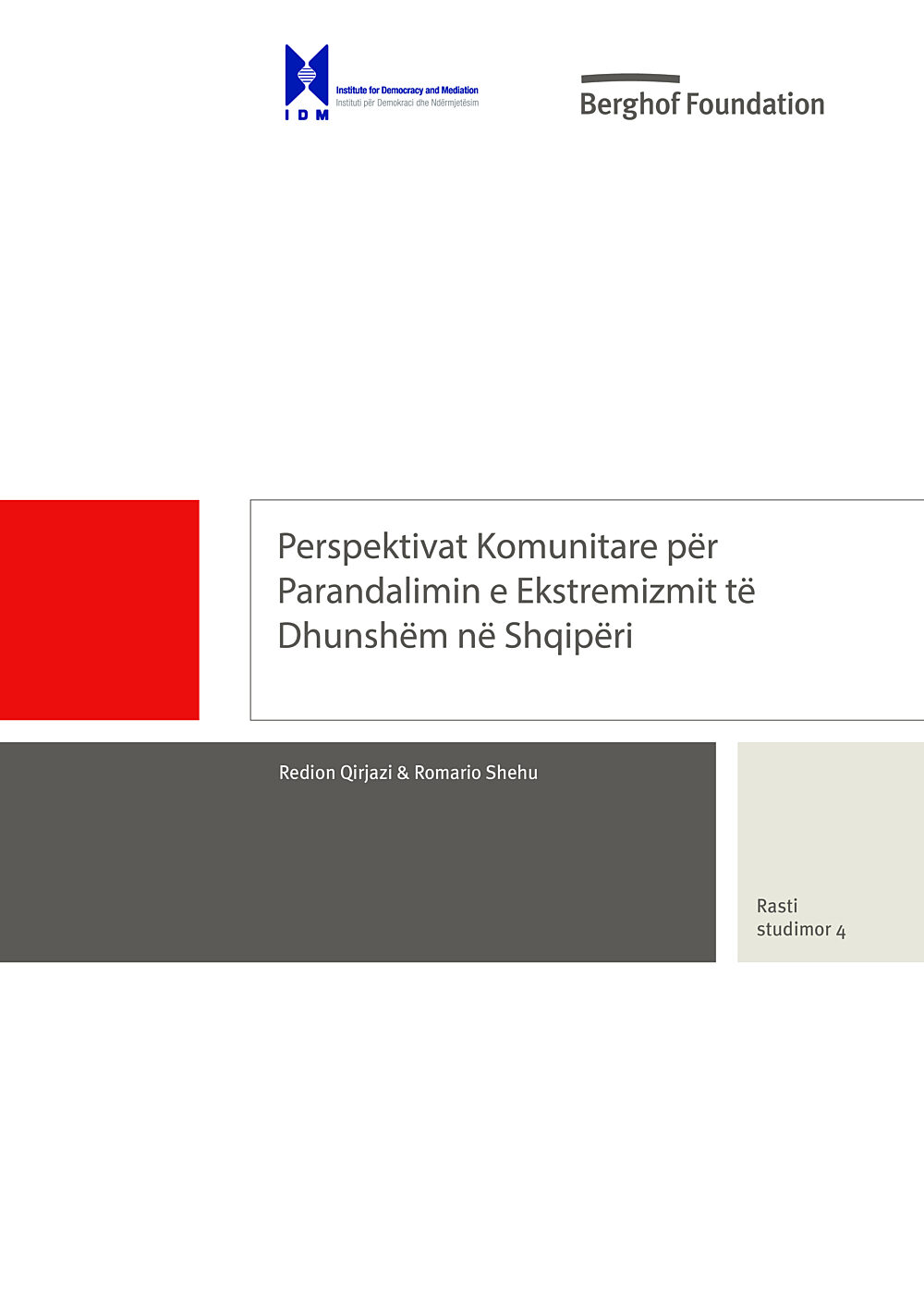
Perspektivat Komunitare për Parandalimin e Ekstremizmit të Dhunshëm në Shqipëri
Rasti studimor i Shqipërisë është kryer së bashku me tre studimet e tjera të cilat mbulojnë Bosnjë dhe Hercegovinën, Kosovën dhe Maqedoninë, në kuadër të projektit studimor “Mundësitë për Parandalimin e Ekstremizmit të Dhunshëm në Ballkanin Perëndimor”. Së bashku me katër partnerët vendorë të hulumtimit, ne shqyrtojmë pse disa komunitete janë veçanërisht të prekur nga individë të frymëzuar nga dhe/ose që bashkohen me Shtetin Islamik (ISIS) ose grupe të të ngjashme të ekstremizmit të dhunshëm, ndërkohë që komunitete të tjera mund të tregojnë qëndrueshmëri më të madhe ndaj të njëjtit fenomen. Bazuar në gjetjet e hulumtimit, partnerët e projektit do të zhvillojnë fushata informimi dhe nisma të dialogut lokal, në bashkëpunim me aktorët lokalë dhe komunitetet e prekura, me qëllim që të shqyrtojnë dhe zhvillojnë strategji për parandalimin e radikalizmit të dhunshëm në Ballkanin Perëndimor.
- Year 2018
- Author(s) Redion Qirjazi, Romario Shehu
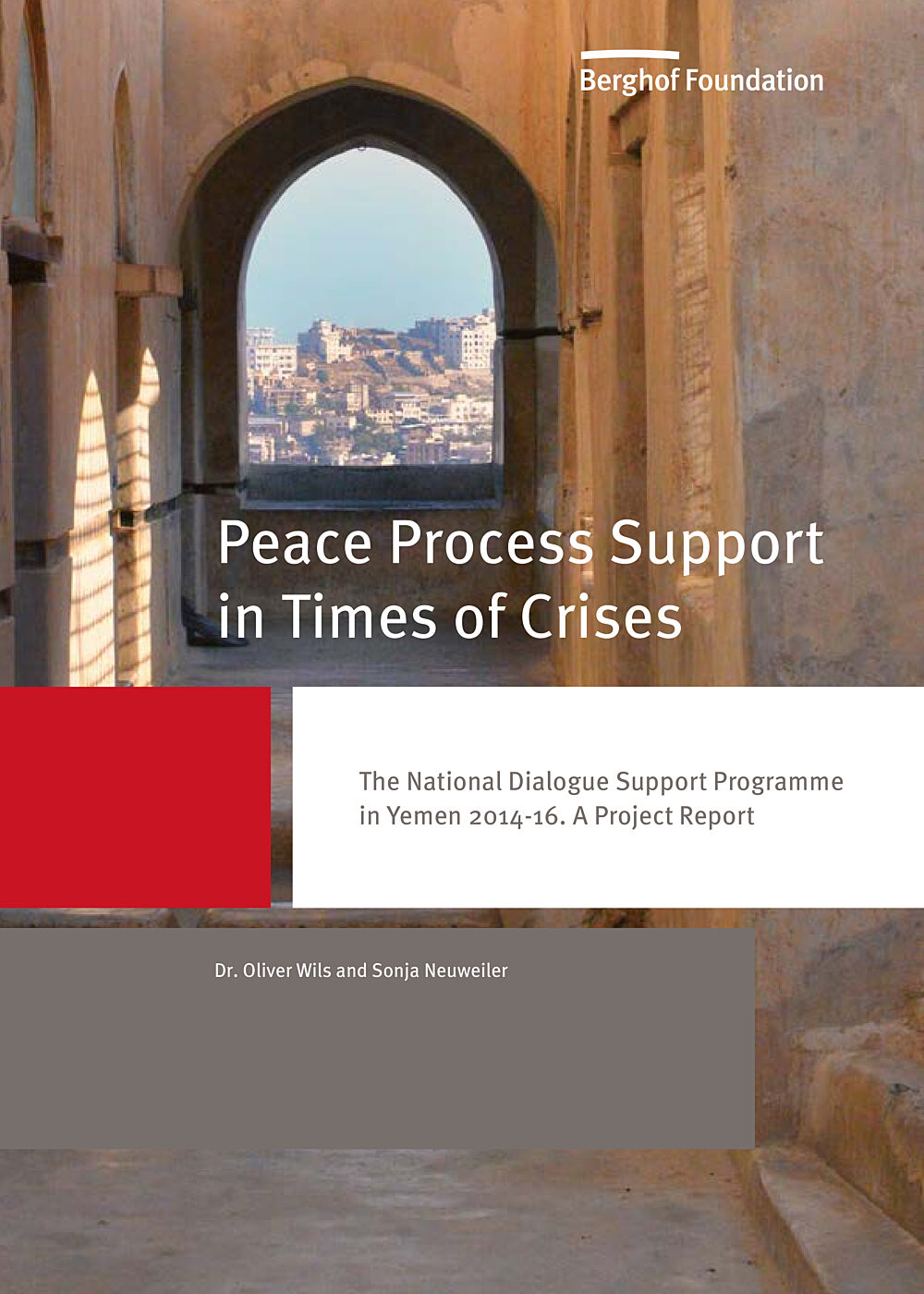
Peace Process Support in Times of CrisesThe National Dialogue Support Programme in Yemen 2014-16
- Year 2018
- Author(s) Oliver Wils, Sonja Neuweiler
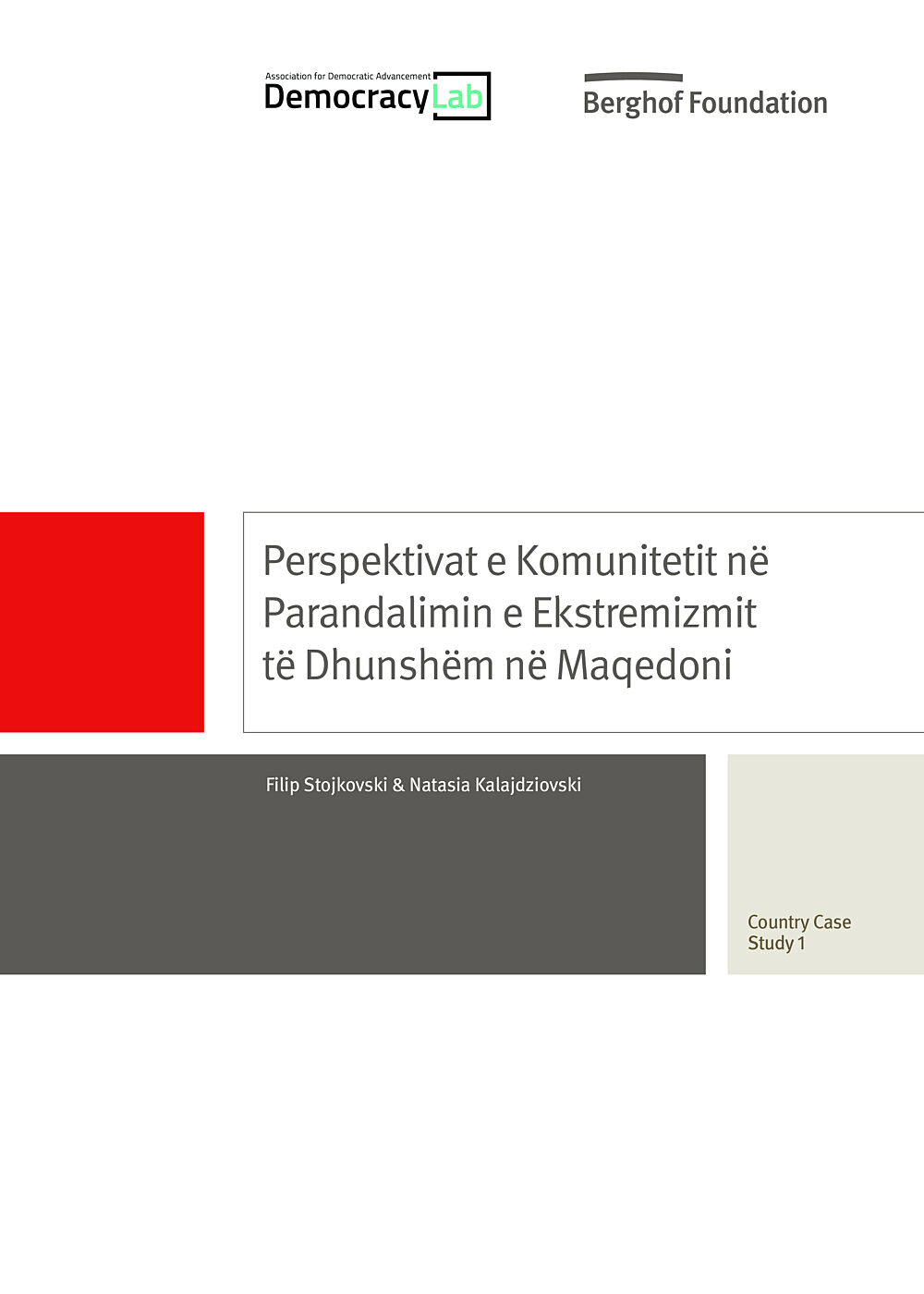
Perspektivat e Komunitetit në Parandalimin e Ekstremizmit të Dhunshëm në Maqedoni
Gjithnjë e më shumë, strategjitë qeveritare për parandalimin dhe luftimin e ekstremizmit të dhunshëm P/CVE konsiderohen si një plotësim i domosdoshëm për strategjitë më të gjera kundër terrorizmit. Një përfshirje e tillë është një njohje se një qasje e pastër e “sekuritizimit” nuk është tërësisht efektive dhe se një strategji që përfshin një “qasje të butë” për të luftuar terrorizmin duhet të kërkojë të adresojë edhe faktorët socialë. Megjithatë, brenda rajonit të Ballkanit Perëndimor – dhe veçanërisht në kontekstin e Maqedonisë – strategjitë për të luftuar terrorizmin kanë qenë të ngadalta në miratimin e qasjeve të Parandalimit/Kundërvënies ndaj ekstremizmit të dhunshëm (më tej në tekst P/CVE).
- Year 2018
- Author(s) Filip Stojkovski, Natasia Kalajdziovski
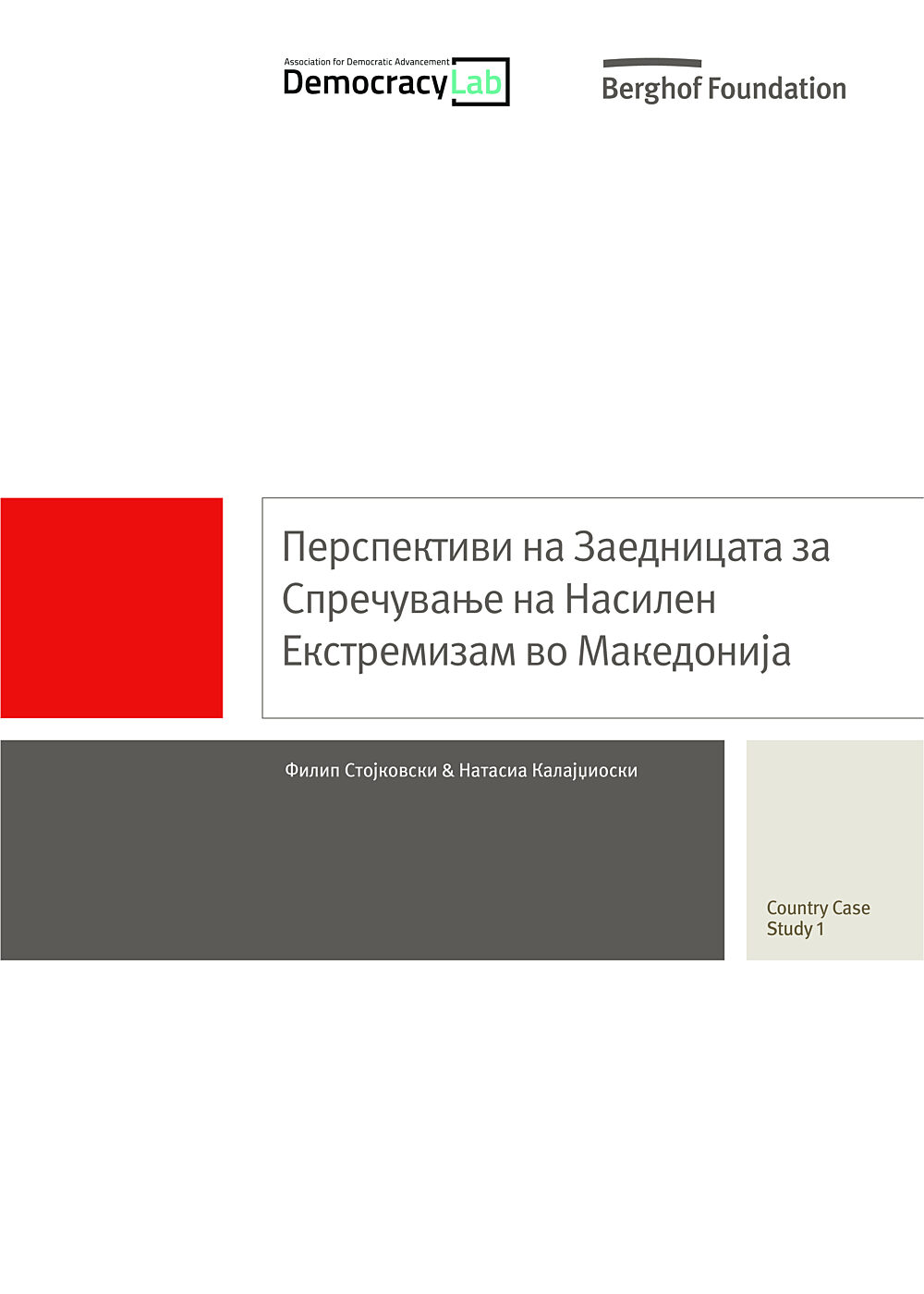
Перспективи на Заедницата за Спречување на Насилен Екстремизам во Македонија
Сè повеќе, владините стратегии за спречување и борба против насилниот екстремизам (P/CVE) се сметаат за неопходно дополнување на пошироките стратегии за борба против тероризмот. Ваквото вклучување е потврда дека еден чист “безбедносен” пристап не е целосно ефективен, и дека една стратегијата која вклучува “мек пристап” за борба против тероризмот мора да бара и решавање на социјалните фактори. Меѓутоа, во регионот на Западен Балкан – а особено во македонскиот контекст, стратегиите за спречување на тероризмот се бавни во усвојувањето на пристапите од P/CVE.
- Year 2018
- Author(s) Filip Stojkovski, Natasia Kalajdziovski
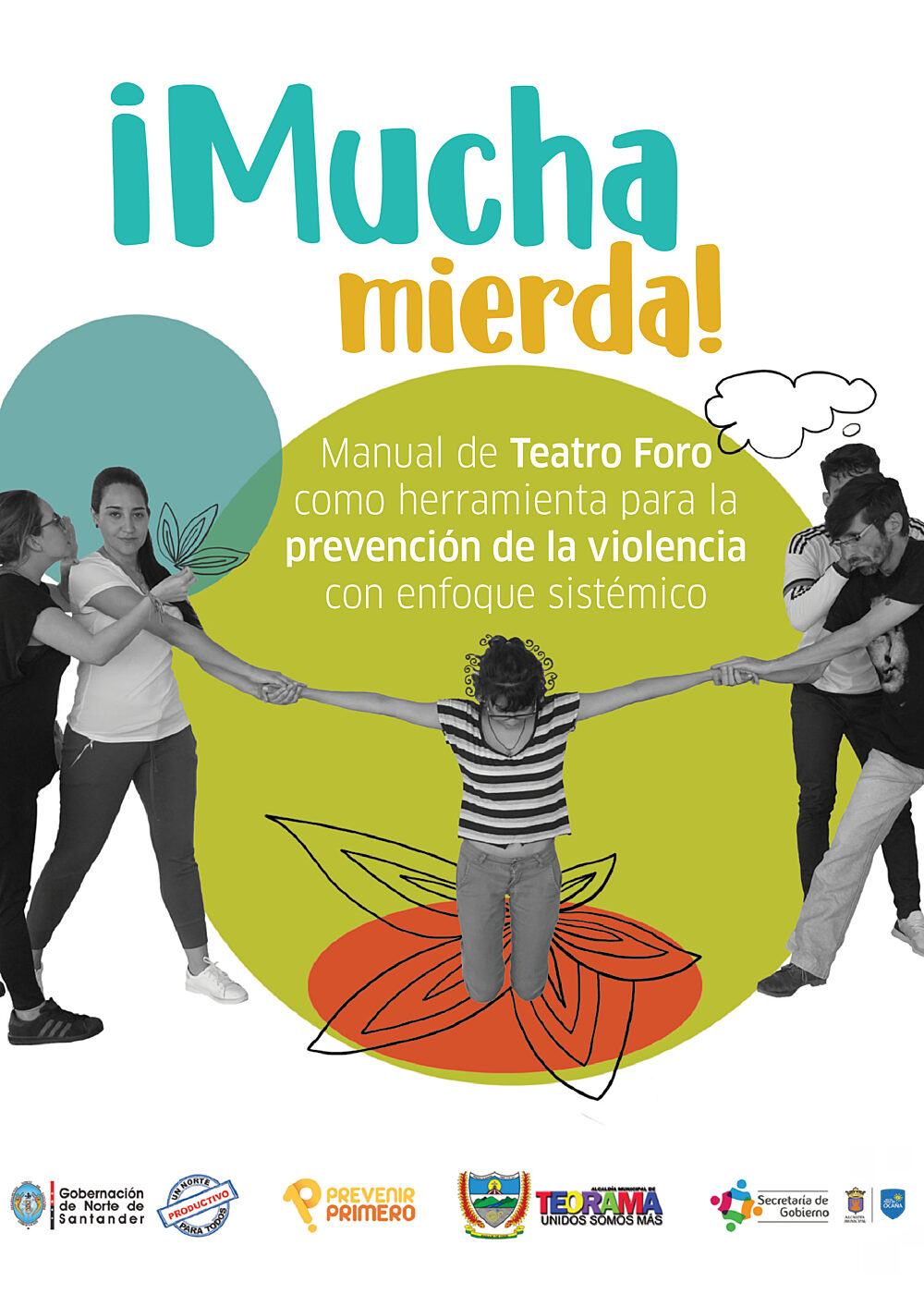
¡Mucha mierda!Manual de Teatro Foro como herramienta para la prevención de la violencia con enfoque sistémico
Este Manual sirve como ‘vademécum’ para las personas y organizaciones que hicieron parte del proceso piloto de ‘formación de formadores’ en Teatro Foro (TF) como herramienta para la prevención de la violencia con enfoque sistémico, en Norte de Santander. Compendia las metodologías y facilita su aplicación ordenada.
Es útil para cualquier persona interesada en TF, al dar un acercamiento comprensivo a los principales conceptos y técnicas de esta variación del teatro convencional, que consiste en invitar a entrar en escena a integrantes del público en un punto en el que la historia plantea un conflicto, para que actúen su propia manera de tramitarlo y así cada quien pase de ser espectador o espectadora pasivo/a, a convertirse en ‘espectactor’ o ‘espectactriz’ activo/a; que hace un aporte transformador y propicia el foro y el debate constructivo.
- Year 2018
- Author(s) José Miguel Abad, Luis M. Benítez Páez
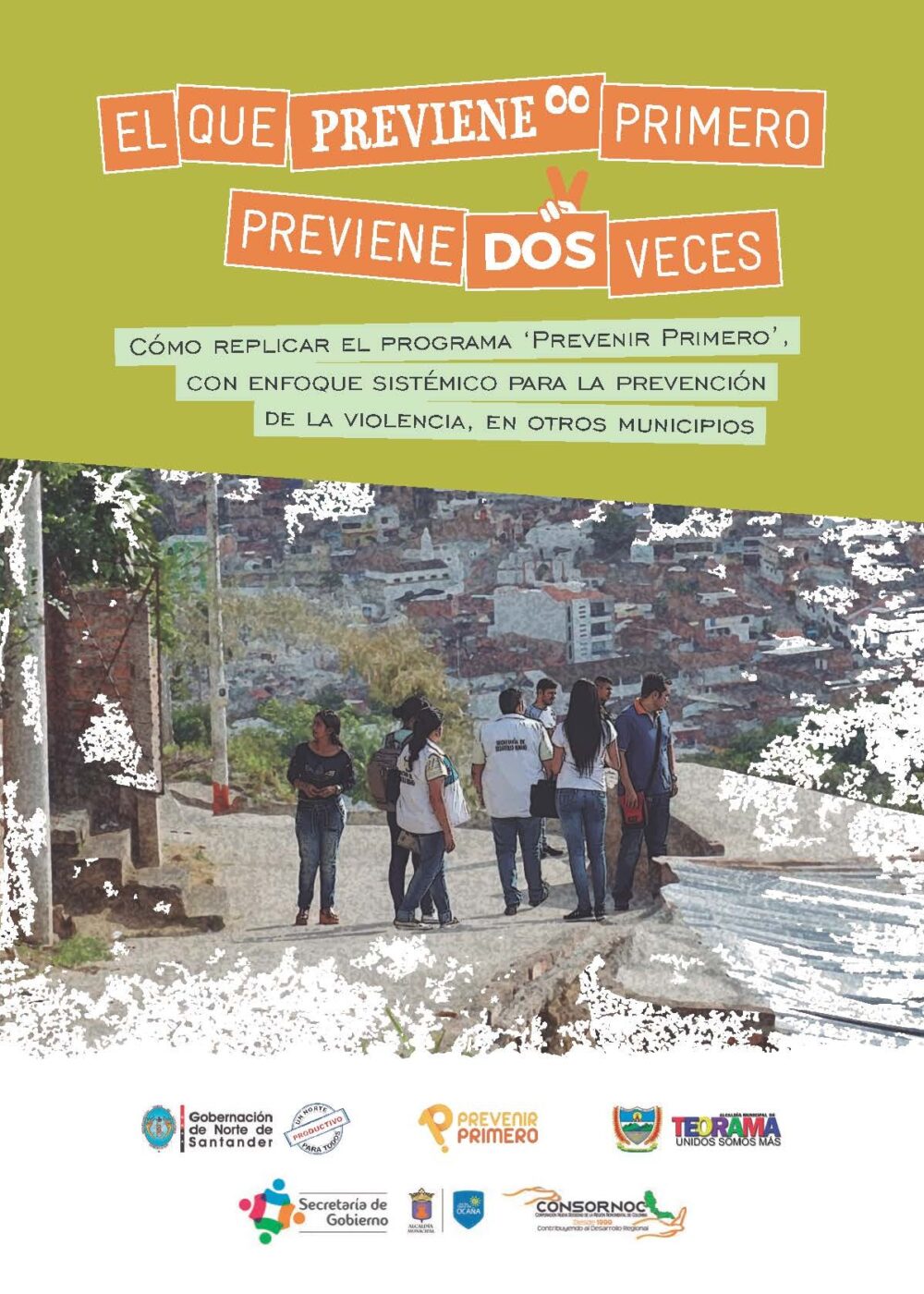
El que previene primero, previene dos vecesCómo replicar el programa ‘Prevenir Primero’, con enfoque sistémico para la prevención de la violencia, en otros municipios
El piloto introdujo conceptos, metodologías y herramientas del Enfoque Sistémico de Prevención de la Violencia, ESPV2, desarrollado por la GIZ3, y mostró la eficiencia de la cooperación multisectorial y multinivel en la prevención de la violencia, al desarrollar capacidades en personas e instituciones para gestionar intervenciones integrales y conseguir mejorar la percepción de seguridad en el caso particular de los barrios de Ocaña y Teorama en donde se trabajó. Los resultados positivos del piloto del programa ‘Prevenir Primero’ lo posicionan para su transferencia a nivel departamental.
- Year 2018
- Author(s) Jorge Rodríguez Villasuso
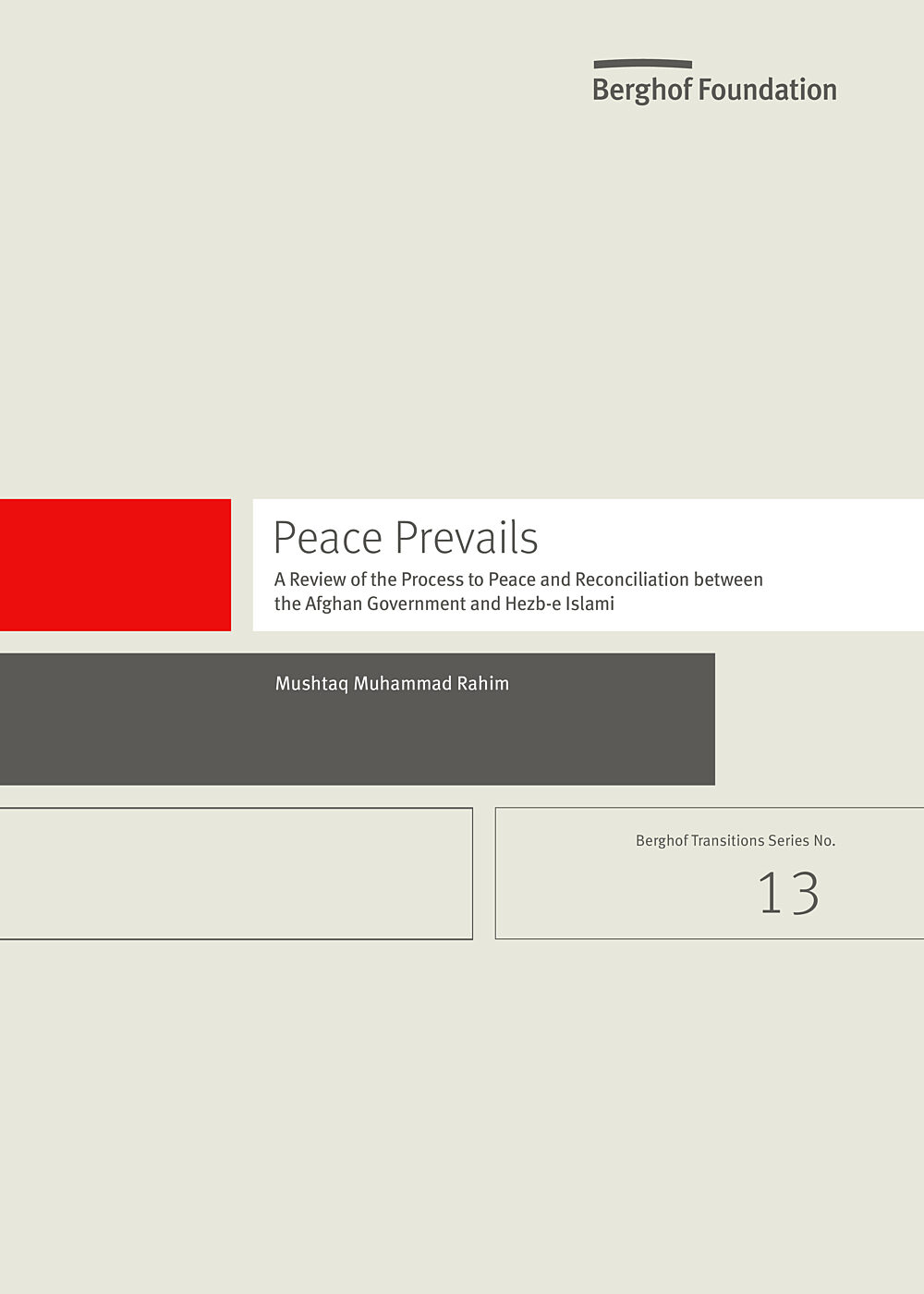
Peace Prevails: A Review of the Process to Peace and Reconciliation between the Afghan Government and Hezb-e IslamiTransitions Series No. 13
This study analyses the peace and reconciliation efforts of the Afghan government and the armed opposition group, Hezb-e Islami. It identifies enabling factors and limitations of the peace process, the resulting agreement and its implementation, as well as lessons learnt that can be used in future peace negotiations in Afghanistan. Hezb-e Islami was founded to establish Islamic governance in Afghanistan during the 1970s. It has been one of the main resistance groups throughout the various phases of armed conflict – fighting invading Soviet forces and the Soviet-backed regime throughout the 1980s and the civil war in the 1990s, battling the Taliban for territorial control and then, after the Taliban was ousted in 2001, combatting the Afghan government and its international backers.
- Year 2019
- Author(s) Mushtaq Muhammad Rahim